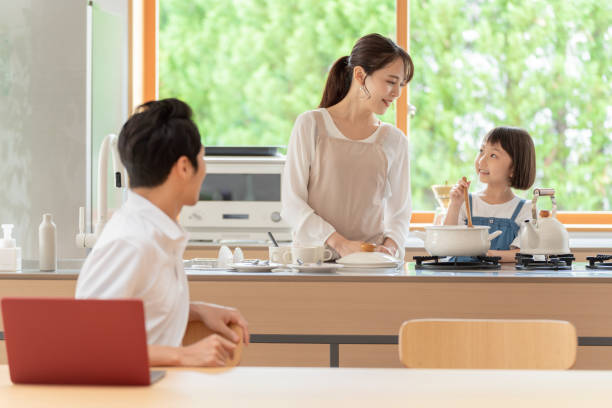Ihr Warenkorb ist leer
🚚 FREE STANDARD SHIPPING — NO MIN SPEND! HOLIDAY DEALS UP TO 50% OFF 🎉
🚚 FREE STANDARD SHIPPING — NO MIN SPEND! HOLIDAY DEALS UP TO 50% OFF 🎉

Japan is known for its innovative and cutting-edge design, and this extends to the world of kitchens as well. Over the years, Japanese kitchen designs have gained a reputation for being both functional and aesthetically pleasing, and this has made them highly influential in the world of interior design. In this article, we take a closer look at the top 10 most influential kitchen designs and trends from Japan.
One of the most defining characteristics of Japanese kitchen design is minimalism. Japanese kitchens are typically small, so designers have had to be creative in maximizing the use of space. This has led to a focus on creating a clean, uncluttered look that is both functional and visually appealing. In Japanese kitchens, you will often find simple, unadorned cabinets and countertops, with a focus on functionality and simplicity.
Another key aspect of Japanese kitchen design is modularity. This involves breaking down the kitchen into smaller, functional components that can be easily rearranged to suit different needs. For example, a Japanese kitchen might have a separate work area for food preparation, a sink area, and a cooking area, all of which can be rearranged as needed. This allows for maximum flexibility and functionality in a small space.
Japanese kitchen design often incorporates natural materials, such as wood and stone, to create a warm and inviting atmosphere. This can include everything from wooden countertops and cabinets to stone flooring and backsplashes. The use of natural materials helps to create a sense of connection with nature, and also adds a touch of elegance and sophistication to the kitchen.
Lighting is another important aspect of Japanese kitchen design. In Japan, kitchens often feature indirect lighting that creates a warm, inviting atmosphere. This can be achieved through the use of lanterns, recessed lighting, or even natural light sources, such as skylights. The goal is to create a soft, diffuse light that is both functional and aesthetically pleasing.
Open shelving is another popular feature of Japanese kitchen design. This involves using shelves instead of traditional cabinets to store dishes, cookware, and other kitchen essentials. The result is a more open, airy feel that allows for greater accessibility and easier organization.
In Japanese kitchens, appliances are often tucked away and hidden from view. This helps to maintain the clean, uncluttered look of the kitchen, and also makes it easier to focus on the beautiful natural materials and textures that are used in the space.
Many Japanese kitchens feature integrated dining areas, where the kitchen and dining room flow seamlessly into one another. This creates a more open, communal feel, and makes it easy to move from cooking to eating and entertaining.
Kitchen islands are a common feature in Japanese kitchens, and they are often designed to serve multiple purposes. For example, an island might include a cooktop, sink, and storage, all in one compact and convenient location. This allows for maximum functionality in a small space.
Sliding doors are a common feature in Japanese kitchens, and they provide a number of benefits. For example, they can be used to hide appliances or other functional elements of the kitchen, or to create a more open, airy feel when not in use. They are also a great way to save space, as they do not take up any floor space when open.
Finally, Japanese kitchens often blend the indoors and outdoors, creating a seamless connection between the two. This can be achieved through the use of large windows, sliding doors, or even outdoor kitchens. The result is a kitchen that feels open, airy, and connected to the natural world.
Japanese kitchen designs are renowned for their innovative, functional, and beautiful aesthetic. From minimalism and modularity to natural materials and indirect lighting, there are a number of key elements that make Japanese kitchens so influential. Whether you are designing a kitchen from scratch or looking to update your existing space, incorporating some of these elements can help to create a kitchen that is both functional and visually stunning.